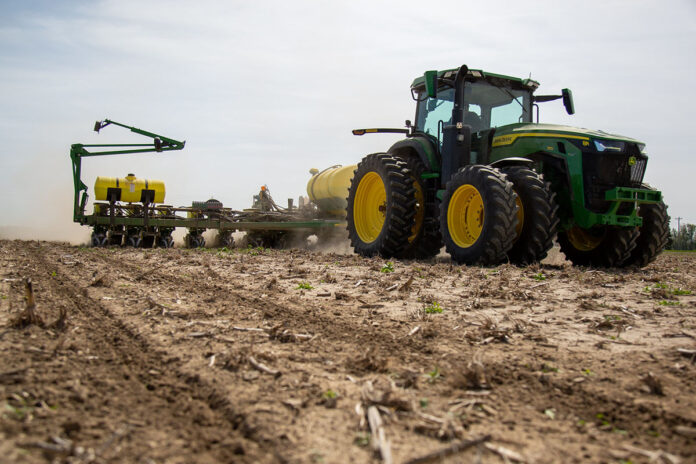In April, as soon as their fields were fit, the Settlemyre family started spreading fertilizer on the land they farm in Warren, Highland and Clinton counties. Then they found out the phosphorus they had ordered wasn’t available.
“We were blessed with an early, dry window from about April the 12th to April the 20th, so we were going at it hard and heavy,” John Settlemyre said.
They expected the job to take about 12 days, but five days into that application window, their supplier called to say they were out of MAP, or 11-52-0 monoammonium phosphate. The Settlemyres were not the only ones affected by a disruption in phosphate supplies this spring, said Tadd Nicholson, executive director for the Ohio Corn and Wheat Growers Association.
Shortage
The phosphate market in the U.S. is dominated by one supplier, which gives farmers, co-ops and other retailers few options for purchasing phosphate products. In 2021, when the International Trade Commission first imposed tariffs on phosphate fertilizers from Morocco, Ohio farm leaders were concerned about the price increases farmers would bear.
Fertilizer prices were already increasing and the tariff would only add to the increases. But higher prices aren’t the only problem farmers are seeing, Nicholson said.
“It’s also a supply issue,” he said.
More than 80% of the phosphate used on U.S. farms comes from one supplier, the Mosaic Co.
“When you have 80% of the market and you successfully block the largest importer from sending it in, you’re basically protecting yourself to say we’re going to be the only game in town,” Nicholson said.
Having so much of the supply provided by one company gives co-ops and other retailers limited options when supplies get tight, Nicholson said. “They have very few phone numbers to call when they want to order phosphate.”
Widespread
This spring, phosphate supplies were tight throughout the state and shortages were reported across southwest Ohio between Cincinnati and South Charleston, Nicholson said. That area gets shipments from Mosaic into a few terminals along the Ohio River.
Flooding also contributed to the shortage in southwest Ohio because barge traffic was slowed. Then, good farming weather and a rush of field work in April depleted supplies before additional shipments were due.
Having more phosphorus suppliers in the market would help mitigate such problems, Nicholson said. “We don’t have another phosphorus supplier to help out those locations when there are disruptions like this.”
An appeal challenging the Moroccan phosphate tariff is pending with the ITC, and the ag industry is waiting for a decision, Nicholson said, adding that the decision was supposed to be handed down in August 2022.
Making do
As it is, farmers are left to make do. To keep running, the Settlemyres ended up shifting to another product that has a lower phosphorus content and 10% sulfur.
“So, it’s a lower concentration of phosphate and the cost per unit is about 25% higher than MAP,” Settlemyre said. “It basically added about $35,000 to our fertilizer cost for this spring from that shift.”
Like many farmers, the Settlemyres prefer to apply fertilizer in the spring rather than the fall. Putting nutrients out close to planting time makes them available when the crops need them and helps protect water quality, Settlemyre said. Supply shortages make it more difficult, however, to complete field work during the short windows available in the spring.
He’d like to see a broader supply chain so that when one supplier has a shortage, there would be several other suppliers to keep products available during peak seasons.











